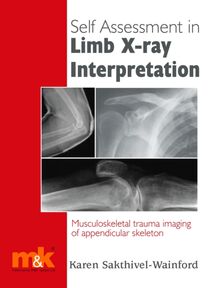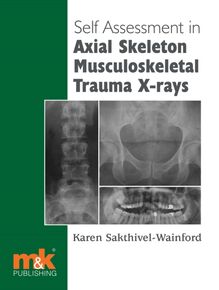-
 Univers
Univers
-
 Ebooks
Ebooks
-
 Livres audio
Livres audio
-
 Presse
Presse
-
 Podcasts
Podcasts
-
 BD
BD
-
 Documents
Documents
-
- Cours
- Révisions
- Ressources pédagogiques
- Sciences de l’éducation
- Manuels scolaires
- Langues
- Travaux de classe
- Annales de BEP
- Etudes supérieures
- Maternelle et primaire
- Fiches de lecture
- Orientation scolaire
- Méthodologie
- Corrigés de devoir
- Annales d’examens et concours
- Annales du bac
- Annales du brevet
- Rapports de stage
La lecture à portée de main
Vous pourrez modifier la taille du texte de cet ouvrage
Découvre YouScribe en t'inscrivant gratuitement
Je m'inscrisSelf-assessment in Paediatric Musculoskeletal Trauma X-rays , livre ebook
Découvre YouScribe en t'inscrivant gratuitement
Je m'inscrisEn savoir plus
Vous pourrez modifier la taille du texte de cet ouvrage
En savoir plus

Description
Sujets
Informations
| Publié par | M&K Publishing |
| Date de parution | 20 mai 2008 |
| Nombre de lectures | 0 |
| EAN13 | 9781907830341 |
| Langue | English |
Informations légales : prix de location à la page 0,0960€. Cette information est donnée uniquement à titre indicatif conformément à la législation en vigueur.
Extrait
Self Assessment in Paediatric Musculoskeletal Trauma X-rays
Also of interest from M K Publishing
Books can be ordered online at: www.mkupdate.co.uk
Self-assessment in Limb X-ray Interpretation ISBN: 978-1-905539-13-0
Practical Prescribing for Musculoskeletal Practitioners ISBN: 978-1-905539-09-3
Routine Blood Results Explained ISBN: 978-1-905539-38-3 Includes new chapter on immunology as applied to the inflammatory autoimmune connective tissue diseases such as rheumatoid arthritis.
Eye Emergencies: The Practitioner s Guide ISBN: 978-1-905539-08-6
Improving Patient Outcomes ISBN: 978-1-905539-06-2
Management of Pain in Older People Workbook ISBN: 978-1-905539-22-2
Visit the M K website for a full listing of titles in print and forthcoming books.
Forthcoming titles include:
Paediatric Minor Emergencies ISBN: 978-1-905539-35-2
Primary Care Case Studies for Nurse Practitioners ISBN: 978-1-905539-23-9
Legal Principles and Clinical Practice ISBN: 978-1-905539-32-1
Microbiology and Infection Investigations Results ISBN: 978-1-905539-36-9
Self Assessment in
Paediatric Musculoskeletal Trauma X-rays
Karen Sakthivel-Wainford
H.D.C.R (R), PGCert, MSc Advanced Radiographer Practitioner, Leeds General Infirmary, UK
Self Assessment in Paediatric Musculoskeletal Trauma X-rays Karen Sakthivel-Wainford
ISBN: 978-1-905539-34-5
First published 2008
All rights reserved. No part of this publication may be reproduced, stored in a retrieval system, or transmitted in any form or by any means, electronic, mechanical, photocopying, recording or otherwise, without either the prior permission of the publishers or a licence permitting restricted copying in the United Kingdom issued by the Copyright Licensing Agency, 90 Tottenham Court Road, London, W1T 4LP. Permissions may be sought directly from M K Publishing, phone: 01768 773030, fax: 01768 781099 or email: publishing@mkupdate.co.uk
Any person who does any unauthorised act in relation to this publication may be liable to criminal prosecution and civil claims for damages.
British Library Catalogue in Publication Data A catalogue record for this book is available from the British Library
Notice Clinical practice and medical knowledge constantly evolve. Standard safety precautions must be followed, but, as knowledge is broadened by research, changes in practice, treatment and drug therapy may become necessary or appropriate. Readers must check the most currentproduct information provided by the manufacturer of each drug to be administered and verify the dosages and correct administration, as well as contraindications. It is the responsibility of the practitioner, utilising the experience and knowledge of the patient, to determine dosages and the best treatment for each individual patient. Any brands mentioned in this book are as examples only and are not endorsedby the Publisher. Neither the Publisher nor the author assume any liability for any injury and/or damage to persons or property arising from this publication.
The Publisher
To contact M K Publishing write to:
M K Update Ltd The Old Bakery St. John's Street
Keswick Cumbria CA12 5AS
Tel: 01768 773030 Fax: 01768 781099
publishing@mkupdate.co.uk
www.mkupdate.co.uk
Designed typeset by Mary Blood Printed in England by Footprint Media, Leeds
Contents
Acknowledgements
Introduction
1. Non-accidental injury
2. Wrist and hand trauma
3. Elbow and forearm trauma
4. Shoulder trauma
5. Ankle and foot trauma
6. Knee and tibia/fibula trauma
7. Pelvis and hip trauma
8. Spine, skull and facial trauma
9. A selection of cases
Bibliography/Reading list
Index
Acknowledgements
Firstly to Dr Arthur, consultant paediatric radiologist, for the sharing of her knowledge and enthusiasm, which imparted to me an interest in paediatric trauma. Also for hercontinuing support, particularly with the in-house paediatric trauma courses.
To the radiology departments of Leeds General Infirmary and Wharfedale GeneralHospital, for their continued support and use of their radiographs in this book.
Lastly, this book is in memory of my father, George Thomas Wainford, and theinfluence he had on my childhood.
Introduction
Many nurse practitioners and radiographer practitioners view paediatric trauma radiographs with a certain amount of trepidation. Rightly so - paediatric radiographs can be difficult to interpret, requiring additional learning (additional courses), and experience, but that is the challenge and interest of paediatric trauma.
Children, infants and adolescents are not like little adults with regard to trauma. Firstly, their bone structure and composition is different from adults. The skeleton of the young is more porous, less brittle, the haversian canals are relatively large and their bones contain more water. This results in greater elasticity and plasticity of their bones, leading to various forms of incomplete fracture.
The periosteum in children also differs from that of adults. In a child the periosteum is thicker, more elastic and less firmly bound to bone. The fibres of Sharpey are less numerous and shorter in a child, resulting in them being less effective binders of the periosteum, leading to raised periosteum (in infection). The thicker and more elastic periosteum is more likely to remain at least partially intact and attached to fracture fragments. Thus the periosteum in a child acts as a hinge between fracture fragments, assisting in the reduction and stabilisation of the fracture. Hence non-union in the child is quite rare.
Infants bones consist of three types: elongated tubular bones, round bones (such as the carpal or tarsal bones) and sesamoid bones (in tendon and articular capsule). Elongated tubular bones are made up of three segments, paired metaphysis, paired epiphysis and diaphysis (shaft of the long bone).
One of the most obvious differences between the skeleton of an adult and child is the degree of maturity. This can be seen by the presence of an epiphyseal ossification centre that is separated from the metaphysis of a long bone by a band of unossified cartilage (the physeal plate). Presence of these growth centres not only modifies the skeletal response to trauma but heightens concern because of the potential for growth disturbance.
This book is written specifically for radiographers, nurse practitioners and radiographer practitioners. It is meant to represent sitting in on a reporting session with a radiologist or reporting radiographer, where you are asked to write a report or comment, but also asked several questions. The book is intended to support whatever course you are attending, or to encourage you to go on that paediatric course .
It starts with an excellent chapter on non-accidental injury (NAI) by Louise Lindsay, a nurse practitioner with an interest in paediatrics, and Joyce M. Clayton, a social worker specialising in children, demonstrating the pathway a suspected NAI case may take from two different perspectives.
Non-accidental injury was thought to be first described by Caffey in 1946 when he was reviewing children with subdural haematomas. Most of the cases of non-accidental injury are brought to medical attention before eighteen months of age, whereas most trauma in children tends to occur after eighteen months of age (when they are more physically active).
Following this there is a series of cases on paediatric trauma, on which you are asked to write reports, plus sometimes answer a few questions. The cases are divided into eight groups, trauma radiographs of the wrist and hand (15 cases), elbow and forearm (10 cases), shoulder (10 cases), foot and ankle (15 cases), knee (10 cases), hip and pelvis (10 cases), rest of the axial skeleton (9 cases). The last group of cases is a mixture of paediatric trauma cases (21 cases).
I have concentrated on the areas of paediatric trauma that more commonly present to an emergency department; hence there are more cases of foot and ankle, and wrist and hand, than other areas, as these are the most frequent emergency department attendees. Also these are areas radiographer practitioners and nurse practitioners are most likely to be reviewing.
The cases have all been anonymised, hence there are no names and sometimes no anatomical markers. This also sometimes results in some of the radiographic anatomy not being present. Each case has some appropriate clinical history with it, but this is often not the original clinical history in order for the patient to remain anonymous.
Lastly there is a list of texts and journals I have found particularly useful in researching paediatric trauma. As for whether all the cases have trauma demonstrated on the radiograph or not, that is for you to decide.
1.
Non-accidental injury
The Nurse Practitioner s perspective
Louise Lindsay
RN, ENP Sister
This chapter covers the role of the Emergency Nurse Practitioner (ENP) in the care of children with non-accidental injuries (NAIs) and will cover some of the laws and legislation surrounding this issue, clinical signs to look out for and what the ENP needs to do if he or she suspects NAI. There are many issues within child protection and I propose to deal with the key points the ENP should be aware of.
Every week in England and Wales at least one child dies following cruelty (National Society for the Prevention of Cruelty to Children, 2004). The people most likely to die a violent death are babies under one year who are four times more likely to be killed than the average person (Youd, 2005). However, abuse can occur at any age in a child s life, in any culture and within any social background and environment. Therefore ENPs need to be vigilant to the possibility of NAI for all children attending a minor injuries unit (MIU). All ENPs must be familiar with and follow legislation and their organisation s procedures, policies and protocols for safeguarding and promoting the welfare of children in their area and know
-
 Univers
Univers
-
 Ebooks
Ebooks
-
 Livres audio
Livres audio
-
 Presse
Presse
-
 Podcasts
Podcasts
-
 BD
BD
-
 Documents
Documents
-
Jeunesse
-
Littérature
-
Ressources professionnelles
-
Santé et bien-être
-
Savoirs
-
Education
-
Loisirs et hobbies
-
Art, musique et cinéma
-
Actualité et débat de société
-
Jeunesse
-
Littérature
-
Ressources professionnelles
-
Santé et bien-être
-
Savoirs
-
Education
-
Loisirs et hobbies
-
Art, musique et cinéma
-
Actualité et débat de société
-
Actualités
-
Lifestyle
-
Presse jeunesse
-
Presse professionnelle
-
Pratique
-
Presse sportive
-
Presse internationale
-
Culture & Médias
-
Action et Aventures
-
Science-fiction et Fantasy
-
Société
-
Jeunesse
-
Littérature
-
Ressources professionnelles
-
Santé et bien-être
-
Savoirs
-
Education
-
Loisirs et hobbies
-
Art, musique et cinéma
-
Actualité et débat de société
- Cours
- Révisions
- Ressources pédagogiques
- Sciences de l’éducation
- Manuels scolaires
- Langues
- Travaux de classe
- Annales de BEP
- Etudes supérieures
- Maternelle et primaire
- Fiches de lecture
- Orientation scolaire
- Méthodologie
- Corrigés de devoir
- Annales d’examens et concours
- Annales du bac
- Annales du brevet
- Rapports de stage








